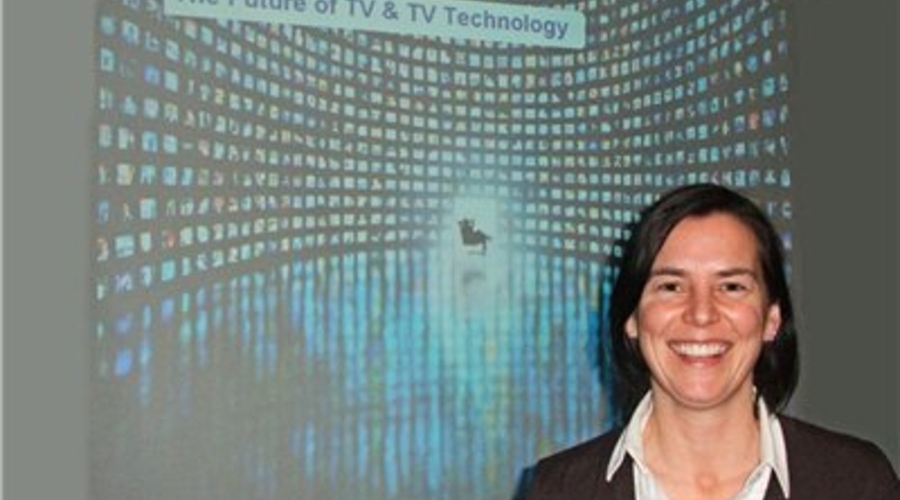THE FUTURE OF TV AND TV TECHNOLOGY
A challenge to the myths and misunderstandings about the current health of commercial television was made at the March event of the Royal Television Society at Newcastle College’s Performance Academy. A superbly-illustrated presentation by Zoe Fuller, Head of Planning at Thinkbox, the marketing body for commercial TV, explained why traditional linear television continues to thrive, both for viewers and advertisers.
She began by drawing on IPA Touchpoint statistics, which measure real behaviour rather than claims by individuals. This data shows that television remains the dominant media in people’s lives. Putting all forms of media together, we still choose television for 54% of our daily media consumption. Young adults are only slightly below at 47%, compared with the 26% they spend online, and commercial television’s share of that television consumption has gone up, to 64% from 58% in the last decade.
Fascinatingly, the speedy and widespread adoption of digital television recorders is actually strengthening the value of live TV viewing and clever scheduling. Although many of us now use DTRs like Sky+ regularly, this has worked to increase television viewing and consolidate our interest in live scheduling. 85% of viewing is still live and 50% of recorded viewing happens within a day of the original live broadcast.
The availability of recorders means we feel more confident about committing to watching serialised programmes because we are less worried about the risk of missing an episode. We do not want to have to select from a huge range of timeless programme options W we enjoy being guided by the schedule, partly to ease decision-making but also because we like discussing programmes socially.
Zoe next set out to shatter what she saw as a myth that the DTR has damaged ad revenue. Domestic video footage was shown from Thinkbox research with people who claimed that they always fast-forwarded recorded ads. They were seen happily absorbed, viewing ads and talking about them W and research suggests that if a viewer has seen an ad once at normal speed, they still have that brand reinforced by 65% when watching the same ad fast-forwarded.
With the increase in TV viewing which has taken place because of recorders, there has been a small net increase in ads seen at normal speed as a result (up 3%) W not the drop many once feared.
In addition, new technology combined with creative thinking has led to many new ways for advertisers to tickle the delight of viewers. Examples screened included ‘makeover’ advertorials shown in successive ads; themed ad breaks; and addressable ads will soon be here W these can be tailored for a specific local audience.
Also, the green button will allow audiences to select a longer-form version of a tantalising shorter ad on mainstream TV. Research suggests that the powerful punch is a combination of a television taster which leads on to online orders.
And if all that isn’t enough, we’ll soon have a chance to assess whether 3D is really the ‘next big thing’. The World Cup will make this a ‘3D Summer’ and 3D gaming also offers huge potential.
Deloitte estimate that more than 90% of television viewing in 2010 will be to linear TV channels. Zoe said that the average viewer sees 43 television ads per day. She made a powerful case that, for the creative advertiser, television now offers an even more attractive range of options than ever before.
By Olwyn Hocking

